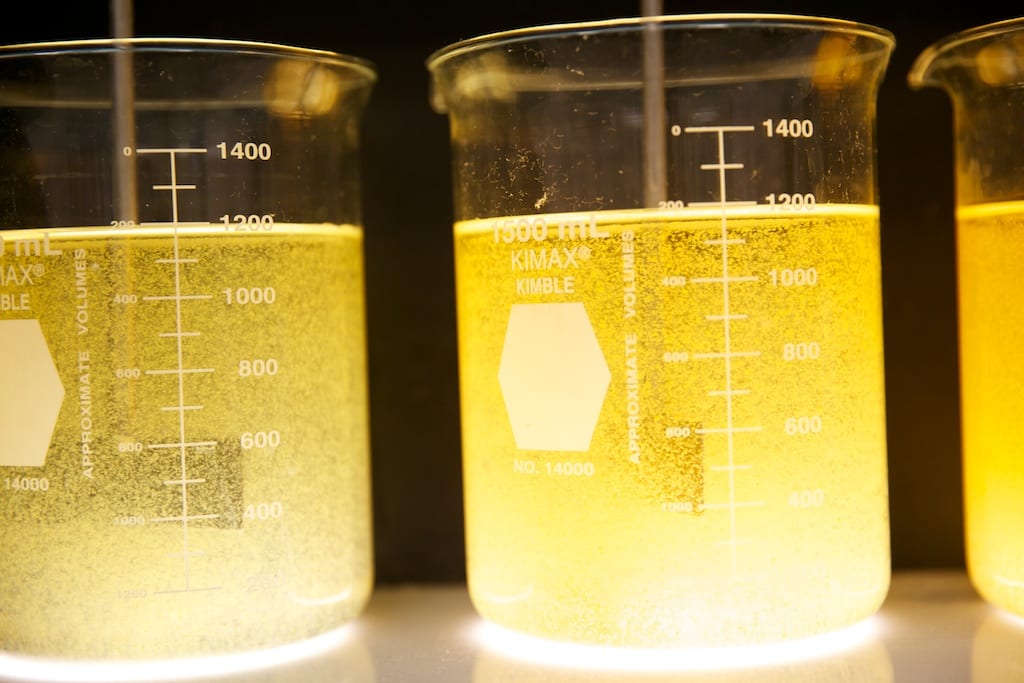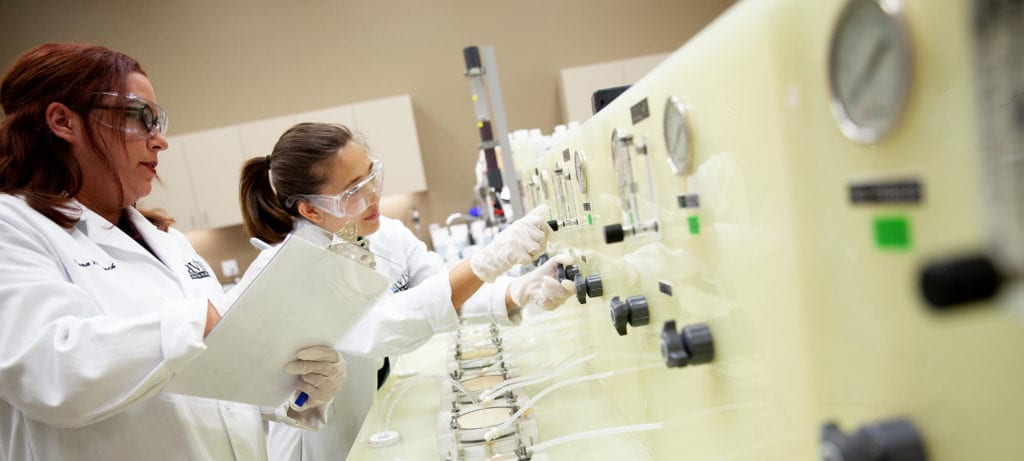Avista™| Filtration Study
The Avista™ Filtration Study helps determine the most efficient and cost-effective dosage of RoQuest™ coagulants for site-specific feedwaters.
The multimedia filtration (MMF) laboratory analysis uses particle counts, zeta potential, and turbidity to characterize a water sample for colloids and silt and determine its fouling potential. The analysis can be done on feedwater or filtrate to gain a better understanding of the foulant parameters.
The Avista™ Filtration Study is a laboratory test analysis that determines the most cost-effective dosage of RoQuest™ coagulants for site-specific feedwaters using multi-media filters.
Role of Avista™ Filtration Analysis in Reverse Osmosis
Water treatment is not a one-size-fits-all solution. It demands precision.
Through analysis studies, Avista™ can recommend tailored strategies to ensure improved feedwater quality, lower colloidal fouling rates, and reduce cleaning frequencies, resulting in longer and more stable system operations.
We do our test analysis using two approaches:
Enhancing Efficiency of Multi-Media Filtration Process
RO membranes have fine pores for the removal of dissolved salts and heavy metals from the feedwater. However, it is important to ensure that the RO feed water has been properly treated. Large impurities must be removed to prevent pre-mature fouling and to protect the health of the membranes.
Multi-media filtration (MMF) typically comes as a pre-treatment separation in an RO membrane system array. Pre-treatment through multi-media filters prevents clogging in high-pressure RO membranes and reduces the washing frequency, thereby minimizing operational and equipment maintenance costs.
MMF typically uses three layers of media arranged by decreasing grain size: anthracite, sand, and garnet. This enables the removal of large particles, such as suspended solids, and other particulates. The best filtration is achieved when these particulates are neutralized via coagulant and flocculant dosage of the MMF feed water.
Avista’s Filtration Study specifically determines the dosage of RoQuest™ coagulants, optimizing performance and cost-effectiveness.
Addressing Site-Specific Challenges in Feedwaters
Recognizing the uniqueness of each water source, we conduct a quantitative analysis of raw and filtrate water properties.
In our analysis method, water quality parameters such as particle count and turbidity are analyzed in correlation with the fouling potential of coagulants and flocculants.
Key Components of Avista™ Filtration Study
Our process involves meticulous set-up preparation and testing analysis procedures, ensuring accuracy and reliability in our study.
The testing procedures are divided into a four-part structure:
Part 1: Filtration Study Benchmark
The goal of a Filtration Study is to improve filtrate sample quality to less than 100 particles per mL and less than 0.20 NTU (turbidity). (Note: We have correlated this RO feedwater quality with reduced cleaning frequency from colloidal fouling factors.)
These parameters are tested on both the raw feedwater and the MMF filtrate samples using two analytical devices:
- Particle Counter: measures a broad range of 2-50 micron particle size per sample volume in mL
- Turbidity Meter: measures the general cloudiness of water in terms of NTU
Part 2: Adding Varying Dosages of RoQuest™ Coagulants
The raw water sample and filtrate samples are added with varying doses of RoQuest™ coagulants mixed with water as a solvent.

The positively-charged RoQuest™ coagulants neutralize the negatively-charged components in the raw water sample. This neutralization process enables aggregates (flocs) to form, increasing the particle surface area.
Part 3: Bench-Top Multi-Media Filtration
After settling the mixtures, they enter through a plastic funnel above the bench-top multi-media filter equipment. Filtrate flow rate is adjusted to simulate the actual flow rate onsite.
Part 4: Filtrate Quality Analysis
The filtrate samples are collected for particle count analysis and turbidity testing. The results are then plotted on a chart that compares the filtrate quality at each tested dosage. Based on the results, we recommend the lowest dose of the RoQuest™ product that achieves the target filtrate quality of less than 100 particles per mL and less than 0.20 NTU.

This test allows us to tailor coagulant dosage to meet specific feedwater characteristics, optimizing treatment efficiency.
Benefits of Avista™ Filtration Study
The Filtration Study has proven instrumental in resolving complex water treatment challenges:
- Improved Filtrate Quality with RoQuest™ Coagulants: Avista™ ensures superior filtrate quality through the use of our specialty formulated RoQuest™ products, guaranteeing improved feedwater quality to RO membranes.
- Optimum Dose Rates and RoQuest™ Coagulants for Site-Specific Feedwater: Our analysis methods determine the optimum RoQuest™ product and dosage specific to your feedwater, tailoring the treatment to your site’s unique requirements.
- Cost-Effective MMF Operations: By determining the minimum dosage of RoQuest™ needed to achieve effective media filtration, you can be confident in the cost-efficiency of our products.
Partner with Avista™ for a comprehensive Filtration Study
Avista™, a Global Brand of Kurita, is a recognized leader in water treatment solutions. With over two decades of expertise in RO membrane systems, we bring cutting-edge solutions to the industry.
Our team of water treatment managers and accomplished chemical engineers are ready to offer in-depth knowledge and expert analysis. Contact us today for a customized solutions to your water treatment needs.


